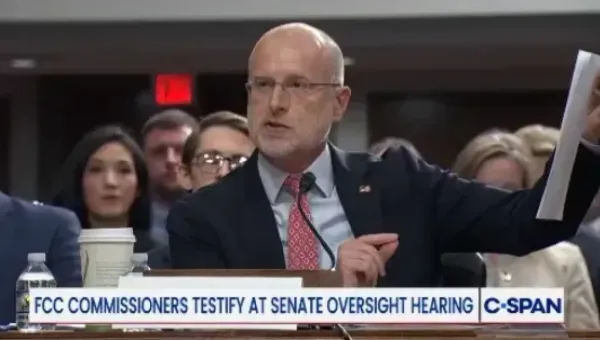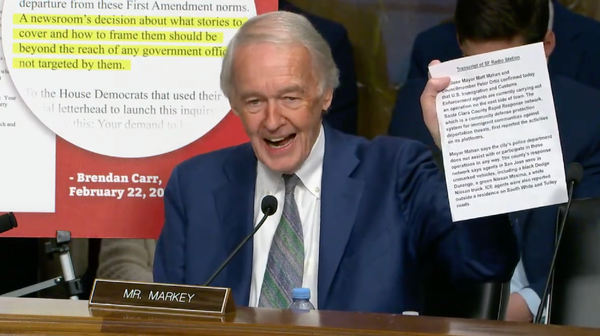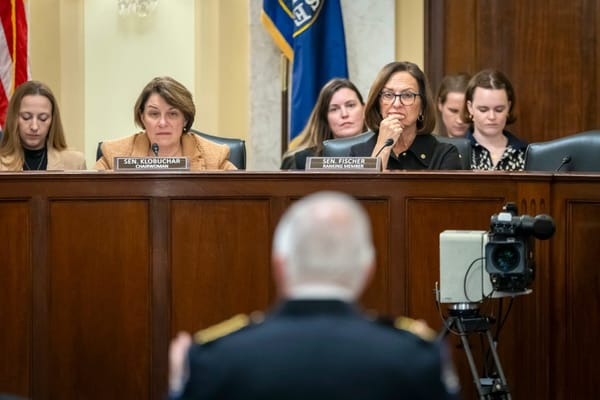Important But Overlooked NTIA Report Highlights Best-Practices for Public-Private Partnerships on Gigabit Networks
April 13, 2015 – Attention on the significance of community-based Gigabit Networks rose dramatically when President Obama included an announcement about the importance of community broadband networks in his State of the Union address in January, and in remarks in Cedar Falls, Iowa, one week before t
Drew Clark
April 13, 2015 – Attention on the significance of community-based Gigabit Networks rose dramatically when President Obama included an announcement about the importance of community broadband networks in his State of the Union address in January, and in remarks in Cedar Falls, Iowa, one week before the speech.
 At the same time, the White House also released a report of its own on community-based broadband solutions, which highlighted the growing demand for Gigabit Networks, and also focused on some of the laws that restrict municipalities’ involvement in broadband.Somewhat overlooked in the process, however, was an important report released on January 14 by the U.S. Department of Commerce’s National Telecommunications and Information Administration.In a blog post that day, NTIA Administrator Larry Strickling recapped the investments of the Broadband Technology Opportunities Program: Upgrading 113,000 miles of fiber, and connecting 25,000 community anchor institutions.The Commerce Department also released an important 16-page report, “BroadbandUSA: An introduction to effective public-private partnerships for broadband investments,” that bears re-examination.In highlighting the importance of public-private partnerships, the NTIA is acknowledging that not all communities, and not all states, want to go the route of municipal broadband deployment. By contrast, many municipalities want to instead deploy public-private partnerships:Given its importance, many local leaders are exploring how to expand the availability and adoption of robust, high-quality and affordable broadband services in their communities. To reach these goals, many municipalities have utilized public-private partnerships. While no partnership structure is exactly like another, there are some common models and best practices that communities should research before embarking on a broadband partnership. The best approach for a particular community will depend upon several factors specific to each community.The report tackles the “why,” the “what” and the “how” of using public-private partnerships. In focusing on the diversity of public-private partnerships, the NTIA implicitly acknowledges the importance of each potential project seeking individualized advice.After highlighting five aspects of NTIA research demonstrating the positive impact of broadband in America, the report notes that “broadband supports both individual and economic vitality. It is the lifeblood of our information society, fueling economic growth, innovation and civic engagement.”In addressing the question of why communities should pursue broadband partnerships, the NTIA writes:Although local, state or federal funding may be available to support
At the same time, the White House also released a report of its own on community-based broadband solutions, which highlighted the growing demand for Gigabit Networks, and also focused on some of the laws that restrict municipalities’ involvement in broadband.Somewhat overlooked in the process, however, was an important report released on January 14 by the U.S. Department of Commerce’s National Telecommunications and Information Administration.In a blog post that day, NTIA Administrator Larry Strickling recapped the investments of the Broadband Technology Opportunities Program: Upgrading 113,000 miles of fiber, and connecting 25,000 community anchor institutions.The Commerce Department also released an important 16-page report, “BroadbandUSA: An introduction to effective public-private partnerships for broadband investments,” that bears re-examination.In highlighting the importance of public-private partnerships, the NTIA is acknowledging that not all communities, and not all states, want to go the route of municipal broadband deployment. By contrast, many municipalities want to instead deploy public-private partnerships:Given its importance, many local leaders are exploring how to expand the availability and adoption of robust, high-quality and affordable broadband services in their communities. To reach these goals, many municipalities have utilized public-private partnerships. While no partnership structure is exactly like another, there are some common models and best practices that communities should research before embarking on a broadband partnership. The best approach for a particular community will depend upon several factors specific to each community.The report tackles the “why,” the “what” and the “how” of using public-private partnerships. In focusing on the diversity of public-private partnerships, the NTIA implicitly acknowledges the importance of each potential project seeking individualized advice.After highlighting five aspects of NTIA research demonstrating the positive impact of broadband in America, the report notes that “broadband supports both individual and economic vitality. It is the lifeblood of our information society, fueling economic growth, innovation and civic engagement.”In addressing the question of why communities should pursue broadband partnerships, the NTIA writes:Although local, state or federal funding may be available to support community broadband efforts, it rarely covers the entire cost of a project. A partnership with commercial operators, however, can complement public funding opportunities, while also bringing expertise on particular technical issues to an initiative. In all these cases, successful partnerships can leverage public financing, community assets and local leadership, in collaboration with private-sector expertise and capital, to expand broadband.
The report outlines three different approaches: (1) A private-sector led partnerships; (2) a government-led and private-supported partnership; and (3) a joint-ownership model.Among the key success factors cited in the report include the catalytic role of government in providing broadband leadership, private sector ingenuity and funding, and support from community forces, including the schools, hospitals and libraries that are frequently dubbed “Community Anchor Institutions.”
In citing numerous successful case studies — from the Sho-Me Technologies co-op in Missouri to the MassBroadband 123 partnership in Western Massachusetts — the report lays out three key steps: (1) Start by planning, (2) Build the business and financial case, and (3) Determine responsibilities of respective parties.Among the “deployment enables” that states and local governments may use in the deployment of a successful project include:- Revising ROW requirements by including reforms such as “dig once” policies
- Adding conduit to all street and parking lot projects
- Streamlining permitting and zoning processes
- Reducing or eliminating fees and rents (ROW fees, physical structures, fiber, conduit and manholes) in exchange for services or use of infrastructure (fiber, wireless)
- Compensating a partner’s participation by offering capacity on unused fiber (indefeasible right-of-use (IRU) agreements)
- Providing access to a local Geographic Information System (GIS)
For the full report, visit http://www.ntia.doc.gov/report/2015/broadbandusa-introduction-effective-public-private-partnerships
Drew Clark is the Chairman of the Broadband Breakfast Club. He tracks the development of Gigabit Networks, broadband usage, the universal service fund and wireless policy @BroadbandCensus. He is also Of Counsel with the firm of Kirton McConkie, based in Salt Lake City, Utah, which enhances clients’ ability to construct and operate high-speed broadband networks in public-private partnerships. You can find him on LinkedIN, Google+ and Twitter. The articles and posts on BroadbandBreakfast.com and affiliated social media are not legal advice or legal services, do not constitute the creation of an attorney-client privilege, and represent the views of their respective authors. Clark brings experts and practitioners together to advance the benefits provided by broadband: job creation, telemedicine, online learning, public safety, energy, transportation and eGovernment.
(Photograph by Doc Searls.)









Member discussion